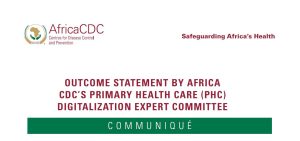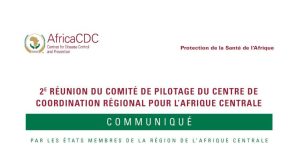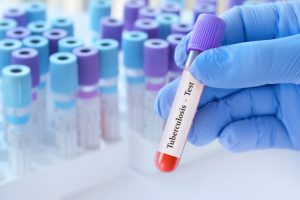Africa has developed a preferred list to guide efforts in improving access to diagnostics for epidemic-prone diseases on the continent. Mpox, dengue, cholera, bacterial meningitis, and measles are the first set of priority diseases for which priority diagnostics have been shortlisted based on the set criteria outlined in the Target Product Profiles (TPPs).
“Specific tests for these diseases will undergo evaluation as part of the pilot of the continental process for regulation of in-vitro diagnostics led by the African Medicines Regulatory Harmonisation (AMRH) programme, in 2025 to address key outbreaks,” said Dr Noah Fongwen, Senior Technical Officer for Diagnostics Access, Division of Diagnostic Access, Africa CDC.
Speaking at the launch of the priority list of Diagnostics and Advocacy for the Continental Process for Regulation of In-Vitro Diagnostics, held from November 26–29, 2024, in Nairobi, Kenya, Dr Fongwen, on behalf of Dr Yenew Kebede, the Acting Director of the Centre for Laboratory Diagnostics and Systems at Africa CDC, laid the groundwork for understanding key processes related to diagnostics and medical devices in Africa.
Getting these diagnostics to patients who need them most requires focusing on harmonisation and overcoming barriers to access diagnostic tests while recognising the role of key organisations such as the African Medicines Agency (AMA) and African Medical Device Forum (AMDF), said Dr Fongwen.
“It’s a complex journey for diagnostics in Africa,” he said. “Diagnostics go through a lengthy and fragmented approval process across multiple countries, and some tests take up to 10 years to be fully adopted.”
There is limited production of diagnostic tests in Africa, despite the continent bearing a high disease burden. “An emphasis on promoting local manufacturing to address this gap is required,” he said.
Dr Fongwen and Mr Alex Juma Ismail, Programme Officer, Regulatory Systems Strengthening, AUDA-NEPAD, discussed the new continental regulatory process to harmonise the regulation of diagnostics in Africa. “This process, which will become operational as part of the African Medicines Agency, aims to reduce duplication, accelerate approvals, and enhance access,” Dr Fongwen said.
Trusting the Process
Africa CDC is working with the African Union Development Agency (AUDA-NEPAD) and the World Health Organization to streamline regional and continental harmonisation of the regulatory processes for medical devices, including In-Vitro Diagnostics (IVDs), which are medical tests that analyse samples taken from the body to detect disease.
The AUDA-NEPAD, in collaboration with WHO, leads the implementation of the African Medicines Regulatory Harmonisation (AMRH) programme and has worked with Regional Economic Communities and National Regulatory Authorities (NRAs) since 2009 to harmonise regulatory standards, guidelines, and processes for medical products, including medical devices.
Working with the AMRH, Africa CDC, through the continental technical committee responsible for supporting the regulatory framework for medical devices and In-Vitro Diagnostics, and the Africa Medical Device Forum, is working to close the gap between the laboratory and regulatory work streams for IVDs. A Diagnostics Advisory Committee (DAC) has been formed as a mechanism to provide this support.
Hicham Oumzil, Chair of the DAC and Professor in the Faculty of Medicine and Pharmacy at the University of Mohammed V, Rabat, Morocco, said it was important to prioritise diseases in Africa and to address gaps that exist.
Professor Oumzil said the parallel but complementary work with WHO’s global diagnostic list is equally helpful in identifying priority diseases specific to Africa.
He advocated for harmonisation of regulatory frameworks and engaging policymakers and healthcare providers to strengthen regulatory systems and enhance access to diagnostic tests for priority diseases and routine diagnostics.
How were some diseases prioritised?
Dr Blaise Akenji, DAC Member, National Public Health Laboratory, Cameroon, presented information on the priority lists for dengue and mpox.
“Diagnostics are not prioritised by Western manufacturers due to limited market incentives in Africa,” said Dr Akenji. “There is also limited access to clinical samples for test evaluations.”
Anafi Mataka, DAC Member, Head of Division, Africa Society of Laboratory Medicine (ASLM), presented the priority list for cholera, bacterial meningitis, and measles. He said cholera, bacterial meningitis, and measles remain a significant public health challenge, disproportionately affecting populations with inadequate access to clean water and sanitation. As of November 20, 38 countries and nearly 500,000 cases were reported in 2024, with over 4,000 fatalities.
“Cases are underestimated due to stigma, there are limited diagnostics, and political factors,” said Mataka.
Mataka said oral cholera vaccines are available but short-lived (effective for 2–5 years), and limited diagnostics hinder the identification of priority areas for targeted vaccination campaigns.
Measles, though vaccine-preventable, remains a challenge in Africa; it was exacerbated by reduced vaccination rates during COVID-19 when outbreaks increased fourfold (2020–2023) due to diverted health resources to COVID-19 and reduced vaccination uptake during the pandemic, he said.
Carrying the Work Forward
Ismail of AUDA-NEPAD said regulatory harmonisation will focus on quality, safety, and performance standards for diagnostics.
Evaluation and Listing of Diagnostics will take a three-step approach, Ismail said. Technical dossiers will be reviewed to assess product design, manufacturing, and performance claims. Independent performance verification will be conducted by entities like the Africa CDC and its Laboratory Network upon request by the AMRH programme.
Dr Fongwen said ministries of health will focus on ensuring alignment, collaboration, and effective implementation of initiatives. For example, partnership and alignment with National Regulatory Authorities will ensure mutual understanding of roles.
Health ministries will align activities of reference laboratories, public health labs, and NRAs to avoid conflicts and ensure cohesive regulation.
He said support will be offered to identify accredited reference laboratories in each region to serve as Centers of Excellence for diagnostic evaluation and advocate for these centers to provide mentoring and capacity building for national public health labs.
The pilot implementation plan for the In-Vitro Diagnostics listing procedure, which spans two years, has been slotted to run from January 2025 to December 2026. This continental pilot, led by the AMRH programme with support from Africa CDC, will strengthen and harmonise the regulation of in-vitro diagnostics in Africa.







